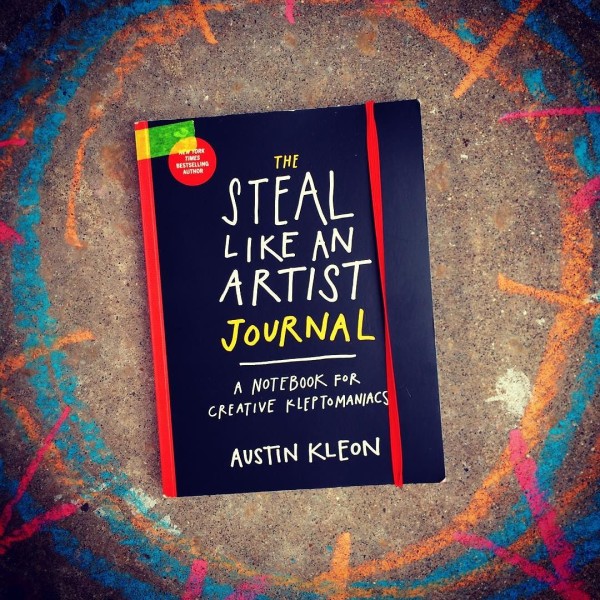Mary Karr once compared reading her own books to a dog sniffing old turds.
“I’m repelled by them,” she said. “The degree to which I never read them is profound.” She doesn’t even keep copies.
This, to me, seems like a perfectly healthy way to go about being a writer — the writing is alive to you when you are writing, and once you’ve written and rewritten as much as Karr has (she’s been known to throw out literally 1,000 pages on a project), you’re finished, you move on.
The life and the fun of the project is often in finding the idea. To “execute” the idea, in some ways, is to kill it. This process is exacerbated by the delayed gratification of the machinery of publishing. “By the time the book is published it’s already practically dead to me,” says cartoonist James Kochalka. “I’ve moved on to other work.”
The book itself is dead, or not dead, but dormant, like Sleeping Beauty: The book is waiting on a reader to crack it open and breathe life into, take the words into their eyes and let them dance in their mind.
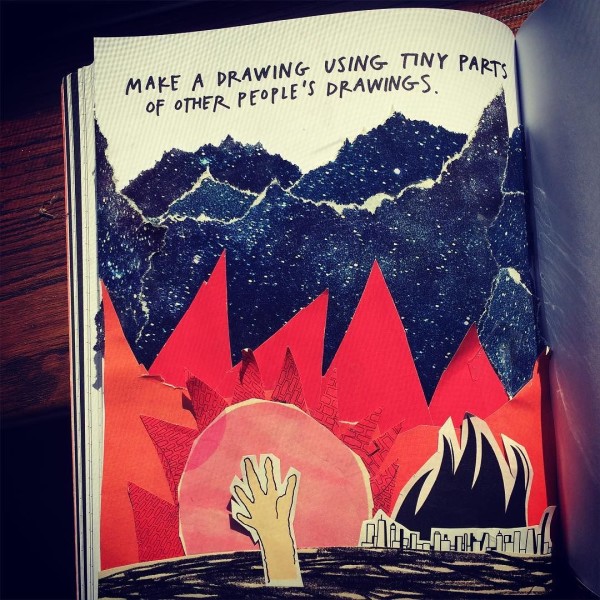
The trouble is that in order for your book to find its way to the reader in the first place, it needs to be put in front of them. This often requires the writer to become a person in sales, a role they are often extremely uncomfortable in playing.
In his talk, “Generation Sell,” William Deresiewicz argued that art-making and sales come from “fundamentally” different places:
It’s the nature of being an artist to be always consumed with doubt. That’s the nature that fuels your exploration. And it’s the nature of the salesperson to suppress all doubt and to speak in exclamation points. Now those functions have to exist in the same person.
At no other time does an author feel the tug-of-war between these two roles more than when on book tour.
“I feel like the wretched employee of my former self,” Ian McEwan bemoans. “My former self being the happily engaged novelist who now sends me, a kind of brush salesman or double glazing salesman, out on the road to hawk his book. He got all the fun writing it. I’m the poor bastard who has to go sell it.”
My book Show Your Work! was about sharing bits and pieces of the creative process as you go, so that you didn’t have to worry so much about selling at the end: by the time you make it to the finished work, your audience is primed to buy. But there’s always more selling to do. “To sell is human,” as Dan Pink says.

I continue to try to find ways to unite the roles of salesman and artist, and figure out how (and if) they can better co-exist. (Then again, maybe they should be kept separate, like alter egos, Bruce Wayne and Batman.)
Basically: What ways are there to be searching for new ideas while peddling the old ones? Is it possible?
That’s a long-winded setup for my most recent experiment: in January, I decided that every day in February, I would fill a page in The Steal Like An Artist Journal and share it on Instagram.
It started in my mind, honestly, as a pure sales thing. A crass promotional device. Despite going on a 10-city tour, I felt a little bit like I hadn’t marketed the journal the way I should have, and I needed an excuse to tell people about it again.
The thing was dead to me, of course, in that way that things published are. Luckily, it wasn’t designed to be read, it was designed to be scribbled in. I wouldn’t have to re-read myself, I just had to do what the prompt told me. I also figured February was the shortest month, and something small every day adds up quickly.
The first tiny sign that things wouldn’t be so simple was when my wife pointed out that it was a leap year, and I’d have to share one more page than I’d planned on.
Next up: our old 1970s ranch house that we’d been renovating since October was finally move-in ready, so by the time I filled my first page on February 1st, most of my studio was still in a box, and I hadn’t actually written anything or pushed a pen across a page for weeks.
Fittingly, I filled my third day’s page with a collage of recently-cursed-at IKEA instructions:
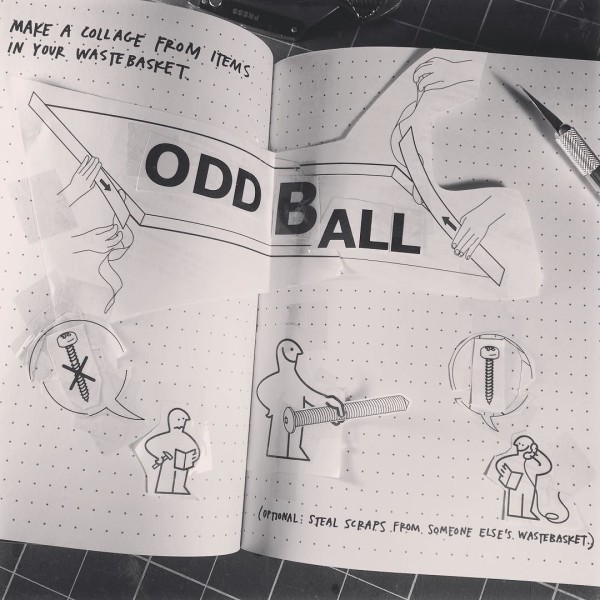
Collage is the activity I often turn to when my brain is empty. (Lynda Barry: “Sometimes we are so confused and sad that all we can do is glue one thing to another.”) After such a long period of inactivity, I naturally turned to exercises involving cutting and pasting:
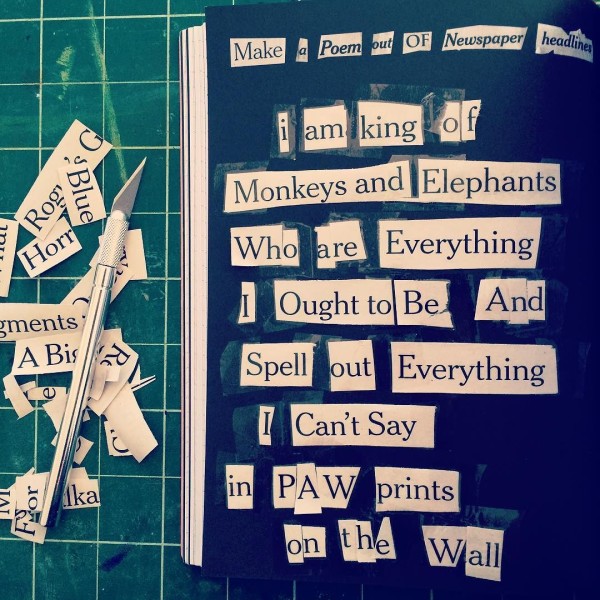
But soon I found myself answering the prompts that were a little deeper:
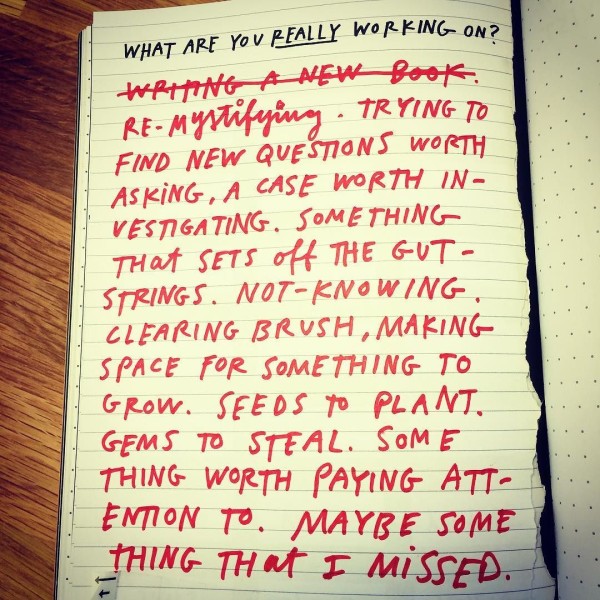
I started diving into what was bothering me:
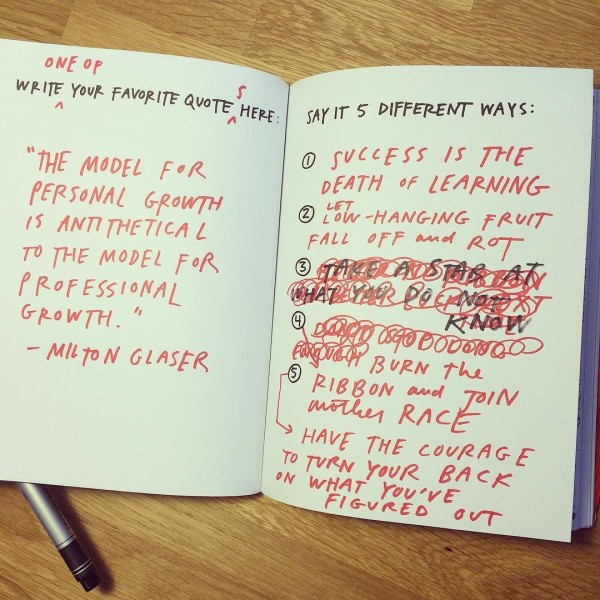
It reminded me of something I read in Kenneth Goldsmith’s Uncreative Writing, a big influence on the journal:
the suppression of self-expression is impossible. Even when we do something as seemingly “uncreative” as retyping a few pages, we express ourselves in a variety of ways. The act of choosing and reframing tells us… much about ourselves…”

I lazily filled out the Krazy Kat exercise with some lines from Waiting For Godot (“what do we do now that we are happy?”) and even THOSE took on autobiographical meaning in light of the new house:
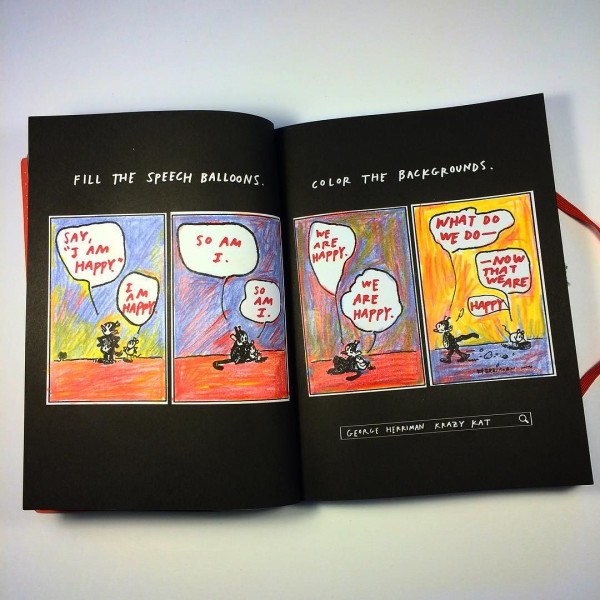
I found that if I actually gave myself over to this material that was previously dead to me, I kept uncovering surprising things. This was made by cutting up my introduction to the journal:
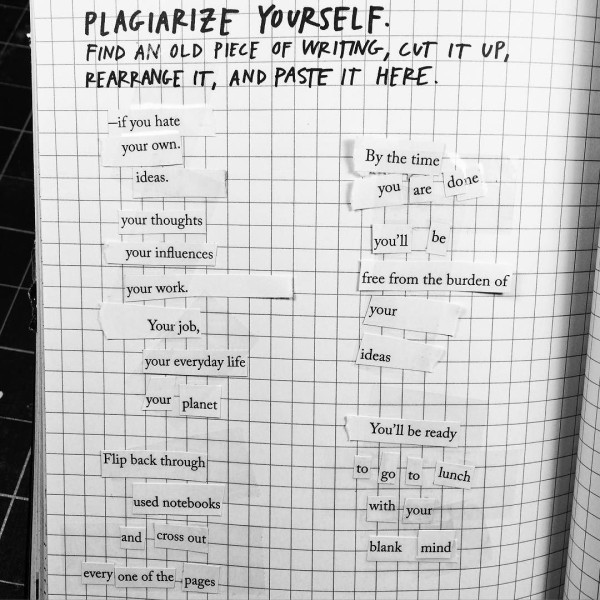
It might seem so obvious, and you could call it just plain ol’ “practice what you preach,” but I ended up somewhat delighted by the experience. My goal in the beginning, when my editor and my agent talked me into the thing, was to make a journal I always wished existed. I just wasn’t expecting that it would ever be so useful to me now. And the 29-day experiment, which began as sort of a chore, wound up being something I looked forward to.
Best of all, by using my own journal every day, I had tricked myself into working again.
And that’s the story of how a promotional gimmick turned into something creatively satisfying.
You can get your own copy of the journal here.
